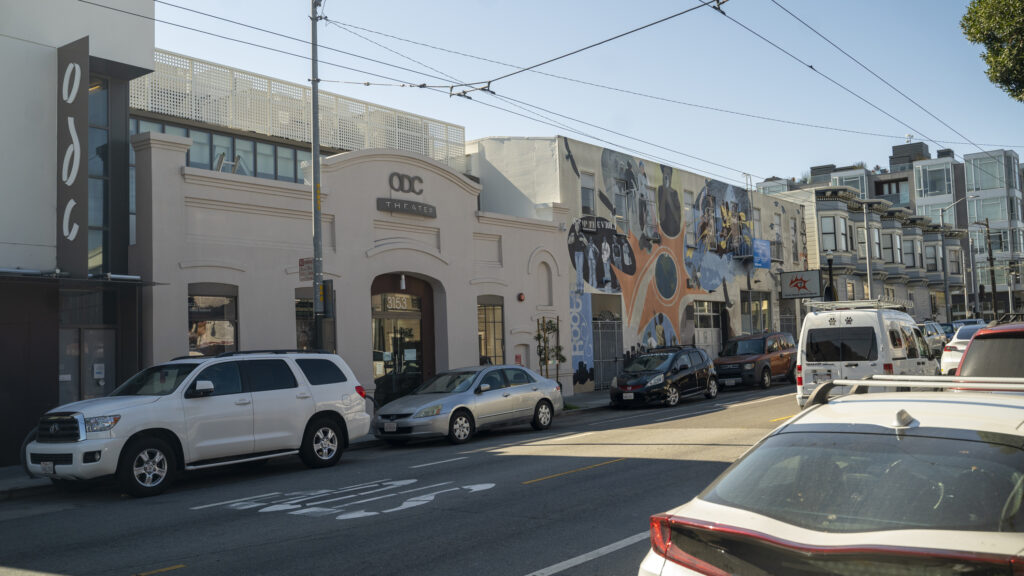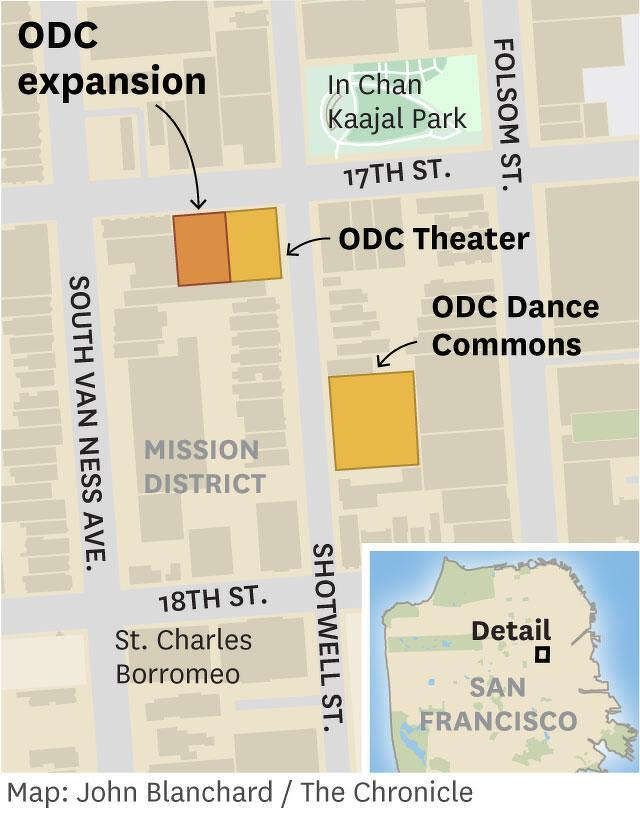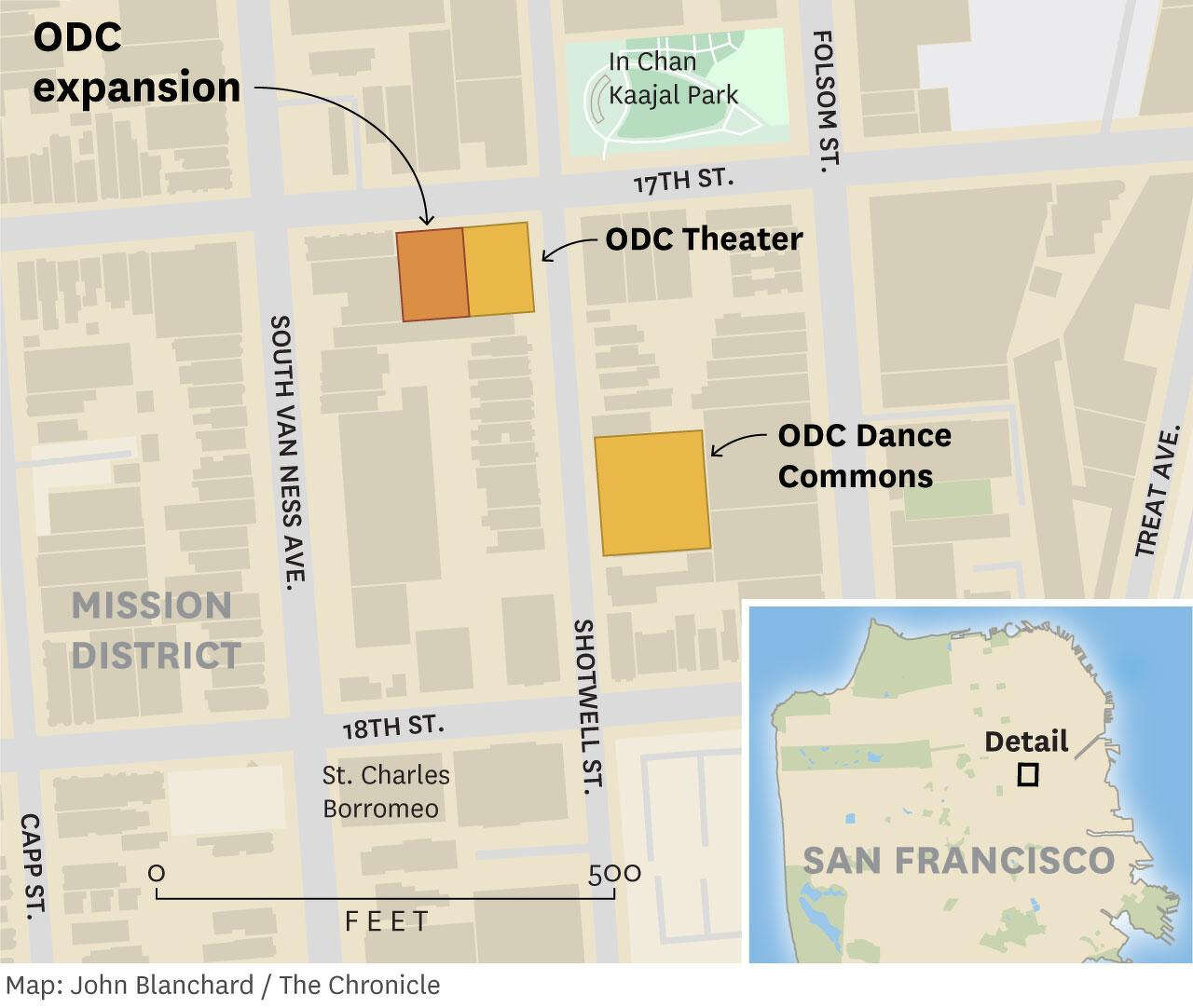
ODC, the dance powerhouse whose expansive Mission District campus comprises two buildings that are home to performance spaces, classrooms, studios and more, has added a third building to its real estate portfolio.
The newly purchased building is at 3175-3177 17th St. in San Francisco, immediately next door to ODC Theater, and around the corner from the multi-purpose ODC Dance Commons at 351 Shotwell St. The $6.7 million acquisition will increase the company’s total footprint by 40%, from 36,000 to 50,400 square feet.
The added space will be used to house ODC’s own activities, while also making room available to other members of the city’s performance community, Executive Director Carma Zisman told The Chronicle in an exclusive interview.
“We have been increasingly aware of the need for more space both for our own programs, and because of what others were representing to us that they need,” Zisman said. “We’ve been seeing a lot of folks who temporarily left the Bay Area or who had to shutter their art-making space. And now there are lot of people trying to engineer a re-entry to San Francisco who really need support.”
For all the company’s growing pains, though, there had been no thought of making a purchase until the building next door — which has been inhabited for more than 20 years by the youth development programSeven Tepees— came on the market.
ODC celebrates more than half a century as a dance powerhouse

“This was a once-in-a-lifetime opportunity,” said ODC Board President Jackie Schneider. “Even before the pandemic, we were pushing up against our four walls, and how often do you get to expand into the building right next to yours?”
子man said that ODC had moved quickly to capitalize on a purchase opportunity that first materialized in the early summer. Still to comeis an extensive renovation of at least a year to make the new building suitable for dance on a large scale.
“It’s a beautiful space, but it’s completely bifurcated with supporting columns, so we can’t just throw the loading doors open and say, ‘Hey everybody, come in and dance,’ ” Zisman said.


For the immediate future, Zisman said the company plans to look for uses that are compatible with the building’s current configuration — children’s classes, community meetings and so on. Conversations are also ongoing with other Bay Area arts organizations that might be able to make use of the space.
The building came on the market because of a shift in organizational direction at Seven Tepees, according toBoard President Dave McMonigle.
“Seven Tepees has been going through a period of change,” he said, “and the space was bigger and different from what we thought we might need in order to contribute to the community going forward. ODC has been a longtime neighbor, and a friendly one at that,so we thought it was appropriate to approach them about this.”
For ODC, whichcelebrated its 50th anniversaryearlier this year amid an array of festive galas and special dance programming, a commitment to owning rather than renting its spaces has always been part of the company’s DNA. That priority, embodied by founder and Artistic Director Brenda Way, dates back to the mid-1970s, when ODC was evicted from a building on Mississippi Street that had been its home.

两届e company’s current buildings, purchased in 1979 and 2005, are owned outright. The new purchase, by contrast, was funded with a combination of cash on hand, new pledges and $3 million in debt.
子man expressed confidence that the debt could be retired relatively quickly, and said that the uncharacteristic borrowing was a function of the short window of opportunity to complete the purchase.
“This was a whirlwind, and our focus was on saying, ‘We’ve got this tremendous opportunity, shall we say yes to this?Canwe say yes?’ And I will say that we had 100% board participation,” she said.“Every single one of our board members stepped up and made either a pledge or gave outright support for this effort.”
The next financial phase, she added, would involve a more extended and broadly based campaign to pay down the remaining debt.
“The longer challenge will be getting clearer on how we can help this building reach its ultimate potential — not just for us, but for the needs of all the folks in our system.”
